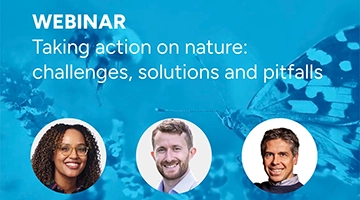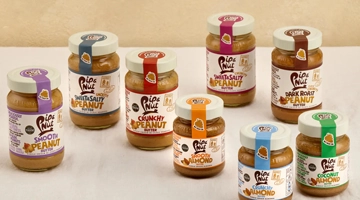 https://www.3keel.com/wp-content/uploads/2025/09/nature-webinar_feature-image.webp
200
360
Carole Scott
https://www.3keel.com/wp-content/uploads/2023/04/3keel_logo-1.png
Carole Scott2025-09-19 13:37:312025-11-04 12:28:27Webinar: taking action on nature
https://www.3keel.com/wp-content/uploads/2025/09/nature-webinar_feature-image.webp
200
360
Carole Scott
https://www.3keel.com/wp-content/uploads/2023/04/3keel_logo-1.png
Carole Scott2025-09-19 13:37:312025-11-04 12:28:27Webinar: taking action on natureCASE STUDY Nordic Aqua Partners
Delivering climate insights to support lower-carbon onshore salmon farming in China
A growing appetite for salmon in China
Although overfishing has caused harvests of wild seafood to plateau in recent decades, global demand has increased. A rapid expansion of aquaculture – farmed fish and seafood – means that the sector now supports livelihoods for around 21 million people worldwide.
Within this market, salmon is no longer the luxury item it once was. According to WWF, its consumption has tripled since 1980. As a result, salmon farming is the fastest-growing food production system globally, supplying 70% of the market—or 2.5 million metric tons.
Demand in China is soaring, with recent reports highlighting a 188% increase in Nordic salmon exports alone in the year to April 2025. According to the FAO, by 2030, China will account for 38% of global seafood consumption and in 2024, the Chinese fresh whole salmon market grew 16%, the highest growth among all major global salmon markets.
Meeting this demand in a sustainable way is a core challenge for salmon producers.
Meet the client: Nordic Aqua
Nordic Aqua is the first foreign company to establish a large-scale RAS (Recirculating Aquaculture System) Atlantic salmon farm in China, which is an alternative technology designed to avoid potential marine environmental impacts. Its aim is to deliver locally-farmed fish direct to Chinese consumers, significantly reducing carbon emissions from long-distance freight. The company achieved its first harvest in 2024.
With sustainability forming a key pillar of Nordic Aqua’s mission in China, the company has turned to 3Keel for two strands of its strategy to track and reduce its carbon footprint: a corporate GHG inventory and product footprint. We undertook both assessments in 2023 and 2024.

Sustainability forms a key pillar of Nordic Aqua’s mission in China.
The challenge
Aquaculture is one of the most efficient ways of using natural resources to produce protein. It has a comparatively low carbon footprint, high-energy and protein-retention-efficiency, and a low water footprint. Salmon has the best ‘feed conversion ratio’ of all animal protein: 1kg of feed produces almost 1kg of salmon.
However, sustainable energy usage and feed remain challenges to address.
When Nordic Aqua came to us, they shared a double materiality assessment that highlighted five strategic sustainability priorities. We were introduced to focus on the environmental pillar, creating the inventory and footprint so that we could identify key hotspots, year-on-year changes and recommendations for carbon reduction.
3Keel has supported our GHG reporting, which has helped us understand how our footprint is impacted by our unique and innovative business model.
Starting point
To reduce its greenhouse gas emissions, Nordic Aqua needed to get a detailed picture of emissions sources. Our data scoping, collection and analysis was carried out in line with the Greenhouse Gas Protocol Corporate Standard and Science-Based Targets criteria.
While energy emissions are relatively minor for sea-based aquaculture, they can be high in RAS. Our initial 2023 research found that approximately a third of Nordic Aqua’s footprint was in scope 2 because of the relatively high energy demand of the RAS system and of China’s electricity grid, which is still shifting away from coal-powered generation. By 2024, this was up to 50%.
Most of the remaining emissions are scope 3, relating to facility construction and production of system inputs, such as feed.
This is an unusual profile for a food production company and it is expected that scope 3 will account for a larger proportion of the footprint in future years.
When we analysed Nordic Aqua’s product footprint, a similar picture emerged. From cradle-to-gate and full life cycle analyses of a kilogram of salmon, we found that 93% of emissions were caused by pre-factory gate activities.
Emissions hotspots
Almost all of Nordic Aqua’s scope 1 and 2 emissions are caused by electricity use.
By 2024, production of salmon feed was driving more of Nordic Aqua’s total carbon footprint than the year before. This was caused by both increased volumes and slightly higher emissions intensity. This was, in part, caused by the feed supplier seeing greater land-use change emissions (primarily from soy-based components).
We recommended that decarbonising purchased energy should be a top priority, with mitigation through renewable energy contracts and onsite generation. We also recommended that feed should be an area to focus on to help drive down emissions.
“3Keel has supported our GHG reporting, which among other things has helped us understand how our footprint is impacted by our unique and innovative business model. We are very pleased with their level of expertise,” said Ana Holden-Peters, Sustainability Director, Nordic Aqua Partners.

The Nordic Aqua team at work.
Impact
From our recommendations, Nordic Aqua is working with its supplier on improving the sustainability of feed, including aiming towards deforestation-free and reducing impacts from marine ingredients.
The company has covered its rooftops with solar panels, generating around a quarter of required electricity onsite. All purchased electricity will be covered by renewable energy certificates.
Work is now also underway on reviewing embodied emissions in capital infrastructure.
You can read more about Nordic Aqua’s work in China here.
3Keel supports marine strategies
If you’d like to find out more about our marine, seafood and fisheries work, please contact Fin Kenneth or Eve Nelson using this form or by calling the office on +44 1865 236500.





